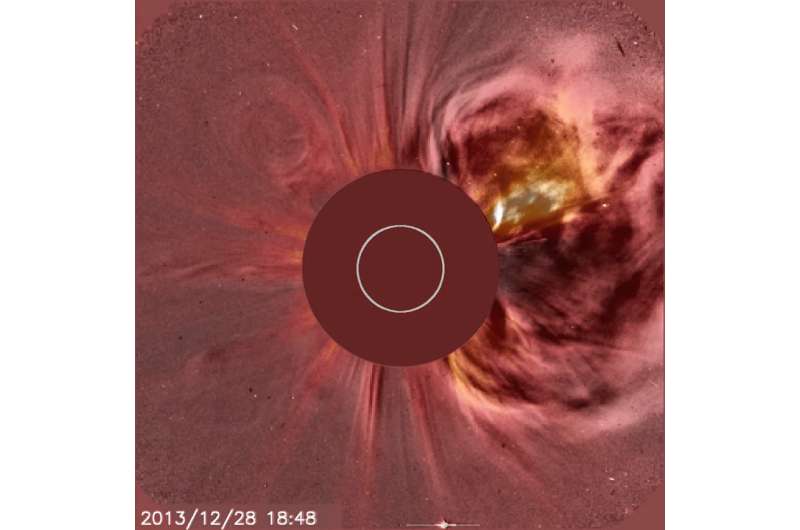Image: Artificial eclipse

The sun experiences both calm and tempestuous periods of activity. At its most active, our star can fling out multiple bursts of particles in a single day in events known as coronal mass ejections, or CMEs. Particles within a CME are ejected at speeds of up to 2000 km/s.
Accurate space weather forecasts are still a work in progress, but we constantly monitor the sun's behaviour using a fleet of spacecraft. One such solar spy is the ESA–NASA Solar and Heliospheric Observatory (SOHO).
SOHO was launched two decades ago, on 2 December 1995. The craft is exploring our star in detail, from its deep inner core to the constant wind of charged particles streaming out from its surface. Although it was originally intended to be a two-year mission, SOHO has been so successful that it has seen repeated extensions that have allowed it to cover nearly all of two 11-year solar cycles, making it the longest-lived sun-watching satellite to date.
SOHO uses a clever technique to observe the sun. By shielding the light from the sun itself, it simulates a solar eclipse – as demonstrated in this image. The grey circle at the centre of the frame marks the size and location of our star, which has been blocked out so that SOHO's Large Angle and Spectrometric Coronagraph (LASCO) can study the solar environment in detail without being blinded by sunlight.
This technique reveals much about the properties of the solar corona, a super-heated region of plasma that extends from the sun's uppermost layers far out into the Solar System. This is where CMEs are born. SOHO imaged this impressive example of a CME on 28 December 2013; it is visible on the right side of the frame as a blur of dark brown and orange.
Although many of SOHO's LASCO images have a characteristic vibrant red or blue colour palette, the dusky pink hue of this image is merely due to a difference in image presentation.
Provided by European Space Agency




















